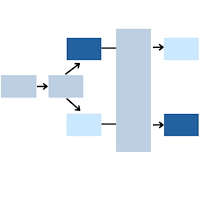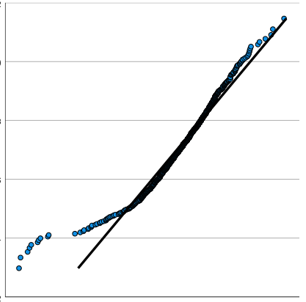Previous Posts
There are two features of survival models. First is the process of measuring the time in a sample of people, animals, or machines until a specific event occurs. In fact, many people use the term “time to event analysis” or “event history analysis” instead of “survival analysis” to emphasize the broad range of areas where you can apply these techniques.
Every statistical model and hypothesis test has assumptions. And yes, if you’re going to use a statistical test, you need to check whether those assumptions are reasonable to whatever extent you can. Some assumptions are easier to check than others. Some are so obviously reasonable that you don’t need to do much to check them […]
You show this table in your PowerPoint presentation because you know your audience is expecting some statistics, though they don’t really understand them. You begin by explaining that the constant (_cons) represents the mean BMI of small frame women. You have now lost half of your audience because they have no idea why the constant represents small frame women. By the time you start explaining the interaction you have lost 95% of your audience.
In this webinar you will learn what these variables are, introduce the relationships between the Poisson, Bernoulli, Binomial, and Normal distributions, and see an example of how to actually set up the data and specify and interpret the logistic model for these kinds of variables.
After you are done with the odyssey of exploratory factor analysis (aka a reliable and valid instrument)…you may find yourself at the beginning of a journey rather than the ending. The process of performing exploratory factor analysis usually seeks to answer whether a given set of items form a coherent factor (or often several factors). […]
Anytime we want to measure something in science we have to take into account that our measurements contains various kinds of error. That error can be random and/or systematic. So what we want to do in our statistical approach to the data is to isolate the true score in a variable and remove the error. This is really what we're trying to do using latent variables for measurement.
We mentioned before that we use Confirmatory Factor Analysis to evaluate whether the relationships among the variables are adequately represented by the hypothesized factor structure. The factor structure (relationships between factors and variables) can be based on theoretical justification or previous findings. Once we estimate the relationship indicators of those factors, the next task is […]
Today, I would like to briefly describe four misconceptions that I feel are commonly perceived by novice researchers in Exploratory Factor Analysis: Misconception 1: The choice between component and common factor extraction procedures is not so important. In Principal Component Analysis, a set of variables is transformed into a smaller set of linear composites known […]
Sample size estimates are one of those data analysis tasks that look straightforward, but once you try to do one, make you want to bang your head against the computer in frustration. Or, maybe that's just me. Regardless of how they make you feel, they are super important to do for your study before you collect the data.
We get many questions from clients who use the terms mediator and moderator interchangeably. They are easy to confuse, yet mediation and moderation are two distinct terms that require distinct statistical approaches. The key difference between the concepts can be compared to a case where a moderator lets you know when an association will occur […]



 stat skill-building compass
stat skill-building compass